Abstract
A range of chemical compounds, mostly with central nervous system depressant activity, have been tested against experimental tetanus in the rabbit. A number of the more potent tested, including mephenesin, betanaphthoxyethanol, barbiturates and phenothiazine derivatives, have been accurately assayed by a method of quantitative electromyography. Phenothiazine derivatives were found to be the most potent anticonvulsants and of these acetylpromazine had the greatest activity. The difficulties of direct comparison of the potency of substances from different chemical groups is discussed.
Full text
PDF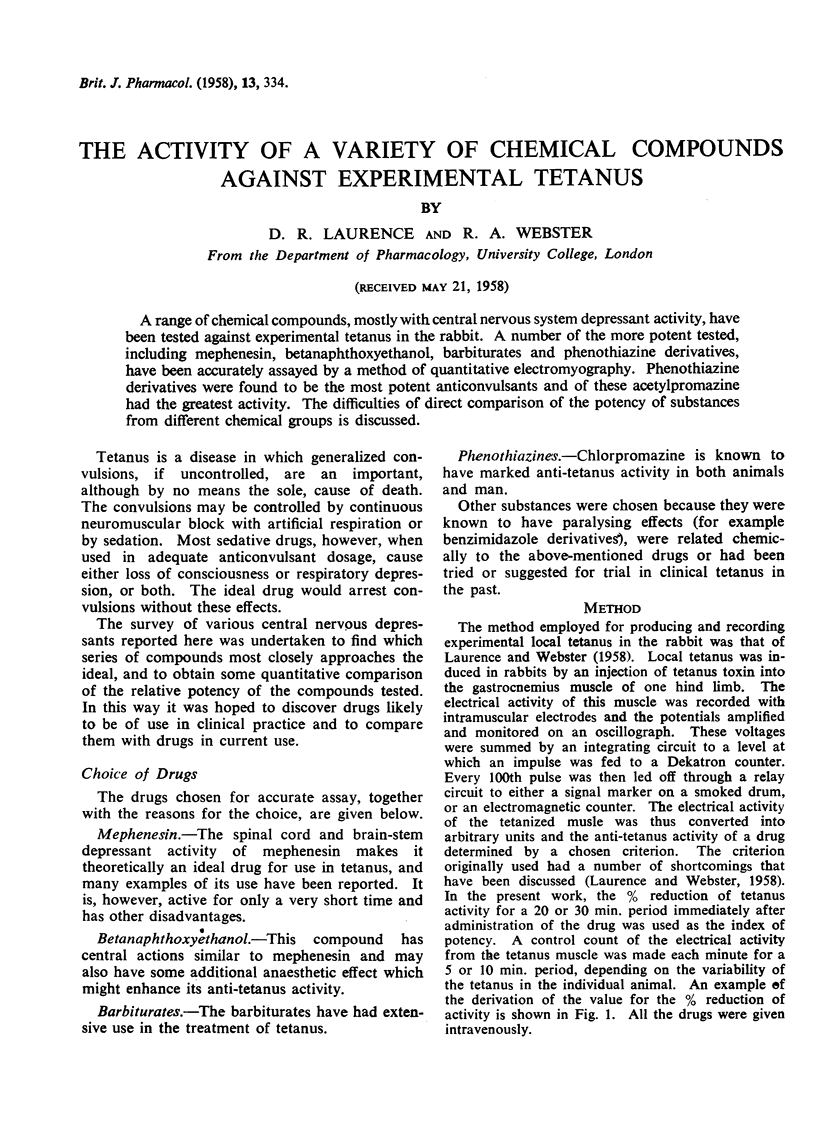
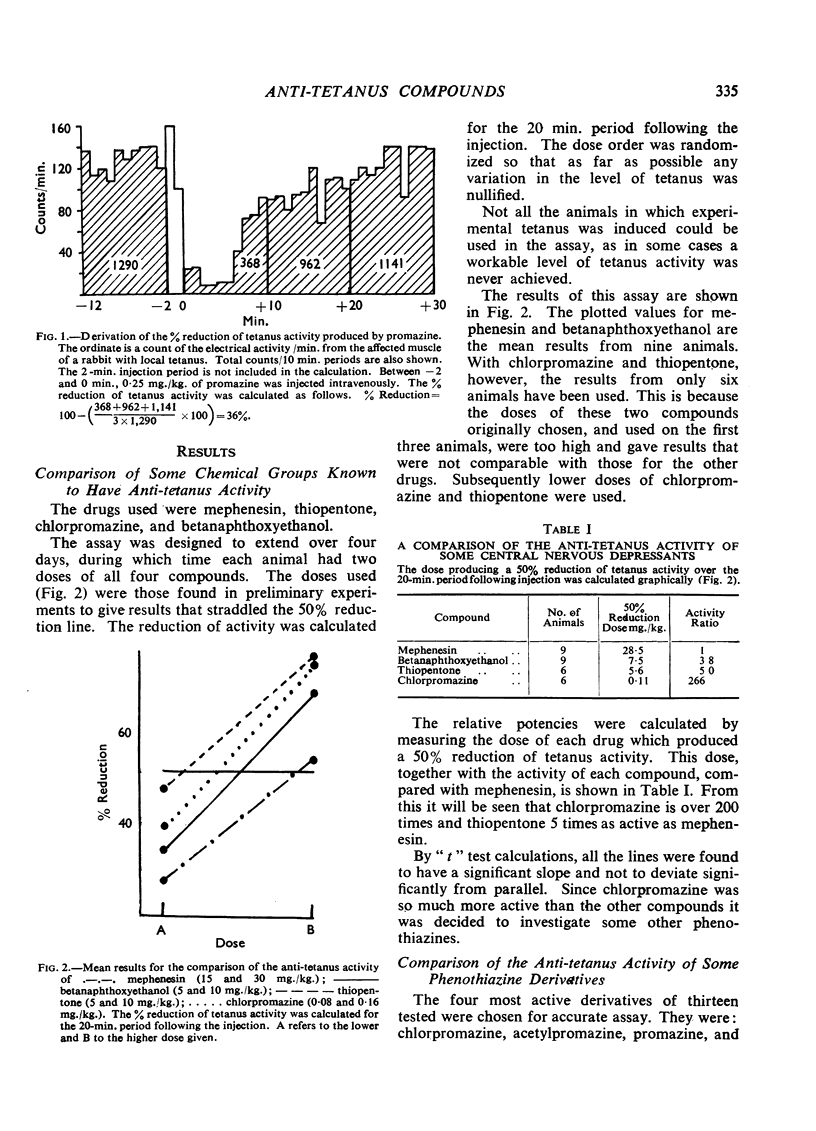
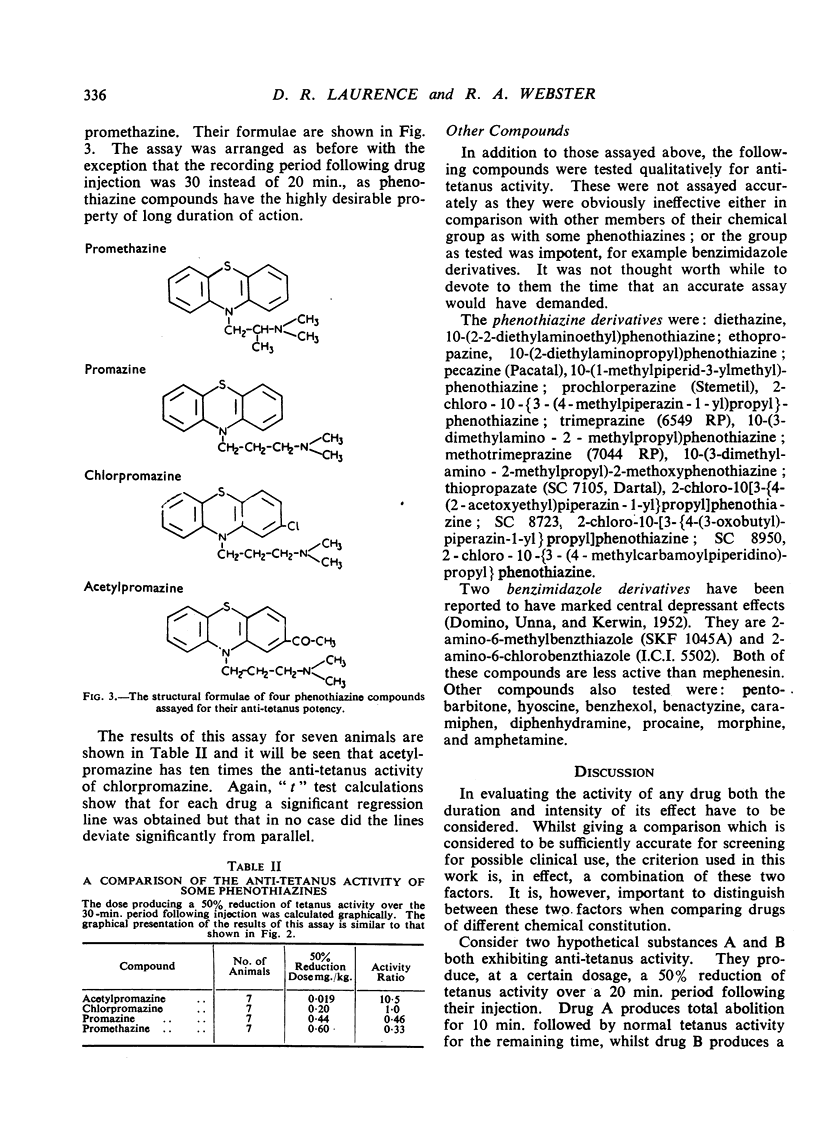
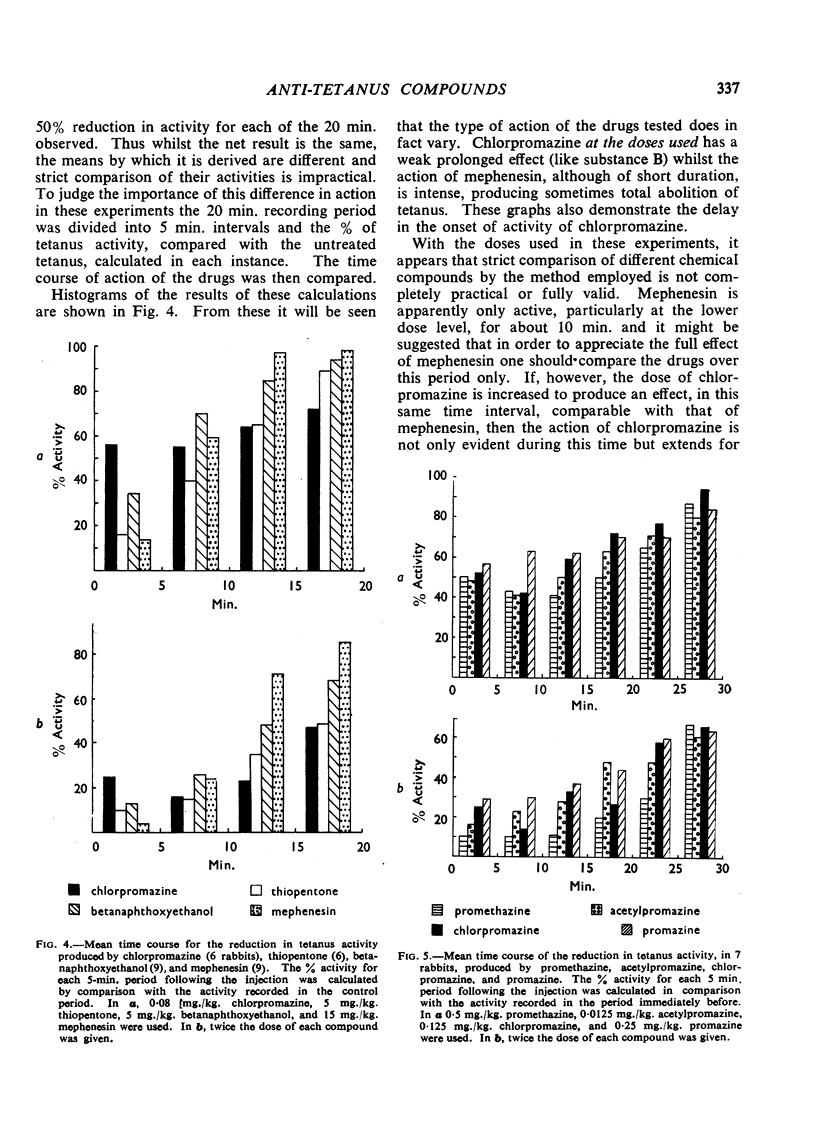
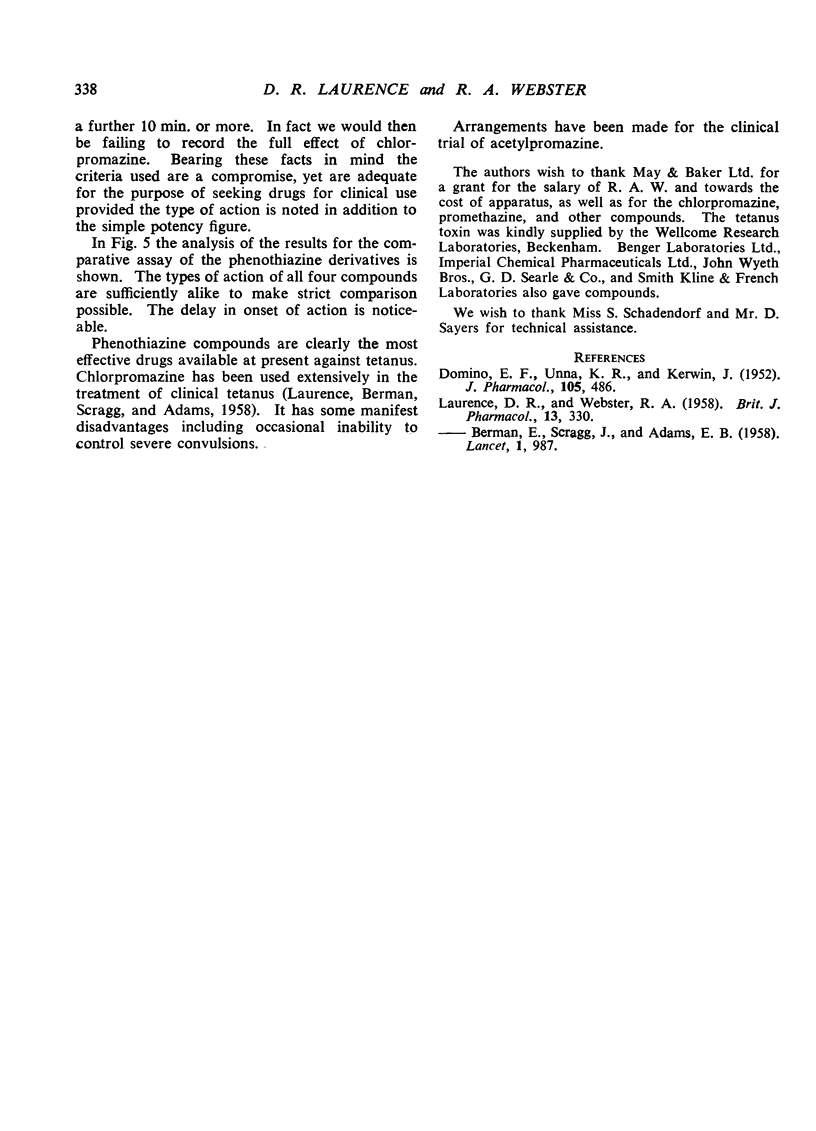
Selected References
These references are in PubMed. This may not be the complete list of references from this article.
- DOMINO E. F., UNNA K. R., KERWIN J. Pharmacological properties of benzazoles. I. Relationship between structure and paralyzing action. J Pharmacol Exp Ther. 1952 Aug;105(4):486–497. [PubMed] [Google Scholar]
- LAURENCE D. R., BERMAN E., SCRAGG J. N., ADAMS E. B. A clinical trial of chlorpromazine against barbiturates in tetanus. Lancet. 1958 May 10;1(7028):987–991. doi: 10.1016/s0140-6736(58)91798-7. [DOI] [PubMed] [Google Scholar]
- LAURENCE D. R., WEBSTER R. A. A method of assaying the anti-tetanus potency of drugs on experimental local tetanus in the rabbit. Br J Pharmacol Chemother. 1958 Sep;13(3):330–333. doi: 10.1111/j.1476-5381.1958.tb00913.x. [DOI] [PMC free article] [PubMed] [Google Scholar]


